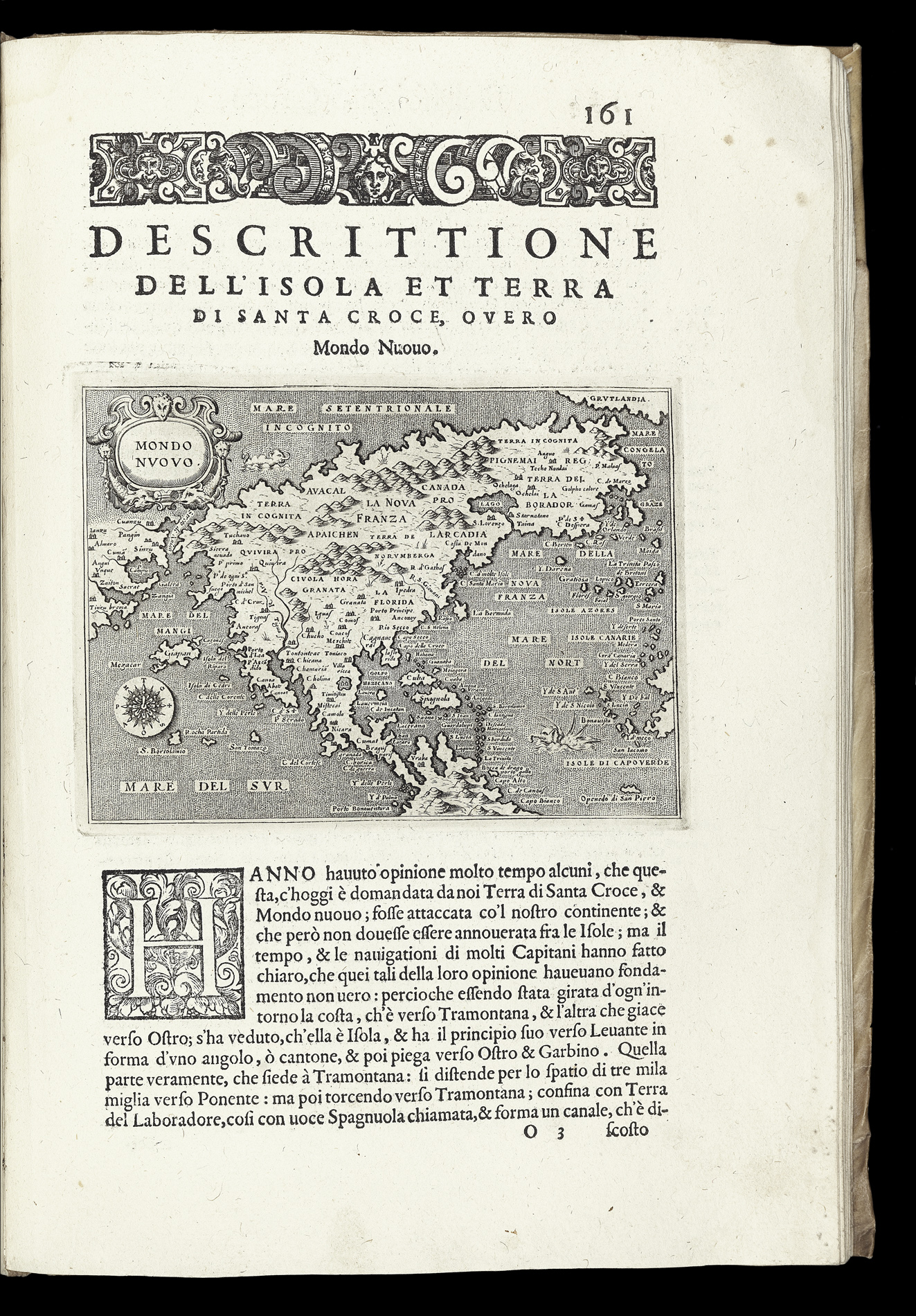
Isola et Terra di Santa Croce, Overo Mondo Nuovo
- Author: PORCACCHI, Thomaso
- Publication place: In Venetia
- Publisher: Appresso gli heredi di Simon Galignani
- Publication date: 1590
- Physical description: Woodcut map
- Dimensions: 110 by 150 mm (4.25 x 6 inches)
- Inventory reference: 3352
Notes
A detailed map of North and Central America, after Forlani’s 1565 map, the first to show North America as a single geographical entity. Forlani’s map was also only the second map after Gastaldi’s 1561 world map to show the Strait of Anian, a hypothetical stretch of water separating separating America and Asia. The existence of this body of water would not be confirmed by a European until Vitus Bering’s 1741 expedition, after which the strait was named after him. The depiction of southwest America and the west coast reflect the discoveries of Coronado’s 1540-42 expedition and the exploration of the West Coast as far as Pont Arena by Cabrillo from 1542-44. California is accurately shown as a peninsula rather than an island, although it bulges in an unorthodox manner. Japan (Giapan) appears between Asia and America.
This map appears in ‘L’isole piu famose’ by Tommaso Porcacchi, a beautiful and important isolario first published in 1572. The isolario, or island book, was a genre developed in the Mediterranean over the sixteenth century as a unique blend of literature, geography and art. It combined up-to-date cartography with contemporary accounts of and information about the places it portrayed. Porcacchi’s work represents the culmination of a movement in the genre towards cartographical accuracy; ‘L’isole’ was aimed specifically at readers who ‘dello studio della geografia si dilettano’ (delight in geographical studies). ‘L’isole’ was the first isolario with maps engraved on copper.
This is the third edition of ‘L’isole piu famose’, enlarged from the original and, according to Phillips, containing 17 maps which do not appear in the 1572 original including two of the New World: Jamaica and Puerto Rico. The addition of the New World islands from the second edition onwards reflects contemporary interest in the geography of the Americas. The detailed, beautifully engraved island maps are set in context by the two splendid world maps in the closing sections entitled ‘Descrizione del Mappamondo’ and ‘Discorso intorno alla carta da navigate,’ pages 193 to 20.
Bibliography
- Philips 3328
- Sabin 64105
- Shirley 127–28
- c.f. 'The World Encompassed' 86.
 Rare Maps
Rare Maps  Rare Atlases
Rare Atlases  Rare Books
Rare Books  Rare Prints
Rare Prints  Globes and Planetaria
Globes and Planetaria 










